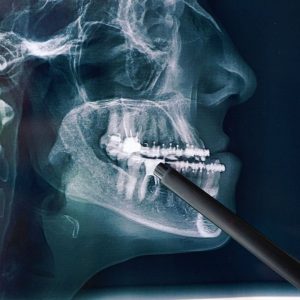
What is Jaw (Orthognathic) Surgery?
Jaw surgery, also called orthognathic surgery, is surgery that helps align your upper jaw (maxilla) and lower jaw (mandible). If your jaws are not aligned, this can affect your bite and make it difficult for you to eat and speak.
Orthognathic (“ortho natic”) surgery is not a single event. It is a process that includes orthodontic treatment to prepare your teeth for your jaw surgery, the surgery itself, recovery from the surgery and further orthodontic treatment for up to one year after the surgery. The jaw surgery process can take between two and three years.
How Do Jawbone Problems Develop in Humans?
In general, jawbone problems are either present at birth (congenital) or are caused later in life by injuries or other medical conditions that affect your jaw.
What are Examples of Congenital Jaw Problems?
Congenital jaw problems can be individual problems, such as overbites, or associated with an overarching medical condition, such as Treacher Collins syndrome. Here are some other examples of congenital jaw problems:
- Crossbite This occurs when some of your lower teeth sit in front of your upper teeth.
- Open bite An open bite is when many teeth do not come together when you close your mouth.
- Cleft lip and palate: Cleft palate occurs when your face and mouth do not develop normally.
- Pierre Robin sequence: Children born with the Pierre Robin sequence often have small lower jaws that can make it difficult for babies to eat or breathe.
What are Examples of Jaw Problems Caused by Injuries or Medical Conditions?
- Facial fractures The term jaw fracture can refer to your lower jaw (mandible) or upper jaw (maxilla). You can break your lower jaw by being hit or punched by an object. The upper jaw can be broken by falling, being in a motor vehicle accident or being hit.
- Cysts and tumors: Healthcare providers may also perform jaw surgery to treat radiation exposure.
- Obstructive sleep apnea (OSA): OSA occurs when your airway muscles, tonsils, tongue or excess tissue block your airway so that your breathing stops and starts while you sleep. OSA is treated with jaw surgery called maxillomandibular advancement (MMA).
- Temporal mandibular joint disorders (TMJ): TMJ can be caused by a malocclusion, which means that your upper and lower teeth are not aligned.
- Growth disorders. This refers to changes in your chin when your body develops too much growth hormone. The excess hormone causes your tissues, including your upper and/or lower jaw, to grow unusually large.
What to do before this procedure?
A lot of preliminary work goes into jaw surgery. Your healthcare provider needs certain information to plan your surgery. Here are some tests and steps they can take to get this information:
- X-rays
- Computed tomography (CT) scans.
- Photos of your teeth and jaw.
- Measurements of your teeth to create a tooth model.
- They can also brush your teeth.
Is there anything I should do to prepare for jaw surgery?
Answer. Your healthcare provider will probably restrict your food intake to liquid foods that you can eat without chewing. Before surgery, consider stocking up on soups, milk, nutritional drinks, and fruits and cooked vegetables that you can liquefy using a blender.
You will have general anesthesia before your surgery. Ask your health care provider about preparing for general anesthesia.








